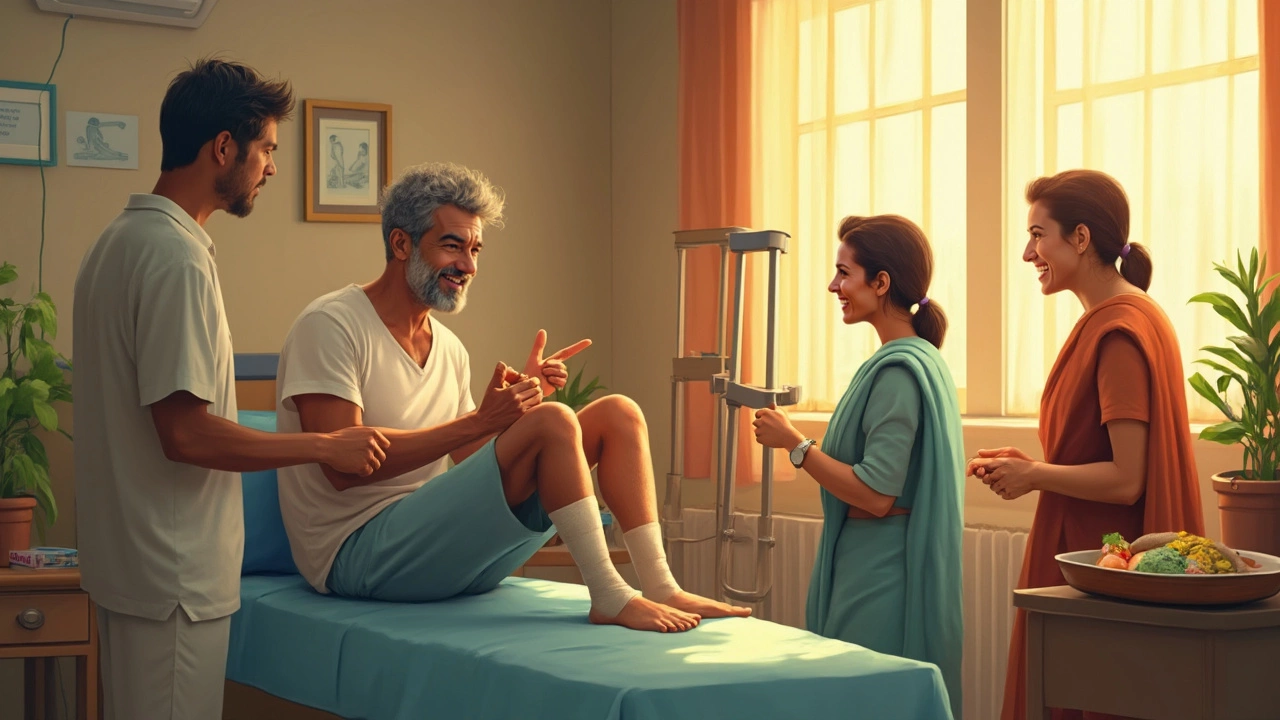Joint Replacement Recovery: What Really Helps and What Doesn't
When you undergo a joint replacement recovery, the process of regaining function and movement after surgery to replace a damaged joint, often the knee or hip. Also known as post-arthroplasty rehabilitation, it's not just about letting the incision heal—it's about retraining your body to move again without pain. Many people think recovery ends when they leave the hospital, but the real work starts there. The first few weeks are critical: swelling goes down, muscles wake up, and your brain learns to trust the new joint. Skip rehab, and you risk stiffness, weakness, or even needing another surgery.
Knee replacement rehab, a specific form of physical therapy focused on restoring range of motion and strength after total knee arthroplasty is one of the most common types of joint recovery. But it’s not just about bending your knee. It’s about walking without a cane, climbing stairs without fear, and getting back to daily life—whether that’s playing with grandkids, gardening, or just standing in line at the grocery store. Hip replacement recovery, the process of regaining stability and mobility after replacing the hip joint follows a different path. You can’t cross your legs or bend too far early on, so rehab has to be precise. Both require patience, consistency, and the right guidance.
What works? Daily walking, even just 10 minutes at first. Gentle range-of-motion exercises done every morning. Strength training that targets your quads and glutes—not your abs. What doesn’t? Pushing through sharp pain, skipping sessions because you "feel fine," or believing rest means lying on the couch all day. Studies show people who start physiotherapy within 24 hours of surgery walk sooner, go home faster, and report less pain at three months. And it’s not magic—it’s science. Your body heals better when it moves, even slowly.
Some think pain means damage. It doesn’t. Aching muscles after rehab? Normal. Burning in the knee after walking? Expected. But if your joint swells up like a balloon or you can’t bend it at all, that’s a red flag. That’s when you call your therapist—not wait it out. Recovery isn’t linear. Some days you’ll feel like a superhero. Others, you’ll wonder why you ever agreed to surgery. That’s okay. Progress isn’t measured in how far you walk on day five—it’s in how much easier it gets by week eight.
And it’s not just about the joint. Your whole body changes. Your balance shifts. Your sleep gets messed up. Your mood dips. That’s why post-surgery physiotherapy, a structured, individualized program to restore movement, reduce pain, and prevent complications after joint surgery is more than stretching and strengthening. It’s mental support. It’s education. It’s learning how to sit, stand, and sleep in ways that protect your new joint. The best rehab doesn’t just fix your leg—it gives you back your life.
Below, you’ll find real stories and practical guides from people who’ve been through it—the tough days, the breakthroughs, the mistakes, and the wins. No fluff. No hype. Just what actually helps when you’re trying to get back on your feet.
-
26
Discover what really hurts after knee replacement surgery, from pain hotspots to unexpected setbacks. Learn tips, facts, and expert secrets for smoother recovery.
